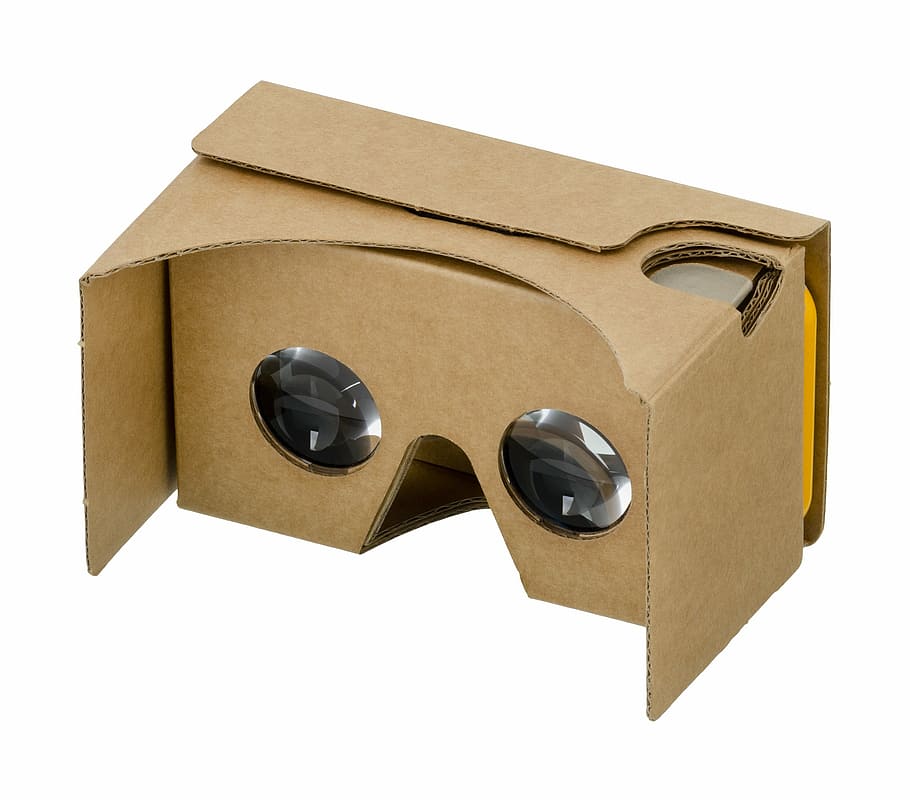In a nutshell, we’re not quite there yet when it comes to full dive virtual reality. Significant challenges remain, but progress is being made. It’s hard to predict exactly when we’ll achieve it, but the future looks promising.
Hey there, fellow tech enthusiasts! I can sense your excitement, and I’m right there with you. Today, we’re diving headfirst (pun intended) into a topic that has all of us giddy with anticipation: “How Close Are We to Full Dive Virtual Reality?” I mean, who wouldn’t want to leave behind the mundane and immerse themselves into a digital world that feels just as real as the one we live in? So, buckle up, folks, because we’re about to embark on a thrilling ride into the future of VR.
The Evolution of VR: From Pixelated Adventures to Mind-Blowing Experiences

Oh, how far we’ve come! It seems like just yesterday when we were playing those clunky, pixelated video games on our bulky CRT monitors. But, fast forward a few decades, and we’re now living in a world where virtual reality has gone from a distant dream to an everyday reality. Let’s take a stroll down memory lane and see how VR has evolved from its humble beginnings to the mind-blowing experiences we enjoy today.

In the early days, VR was merely a figment of science fiction writers’ imaginations. But, with the advent of computer graphics and some visionary tech pioneers, the seeds of virtual reality were sown. Remember the Virtual Boy from the ’90s? Yeah, that headache-inducing console might not have been the smash hit Nintendo was hoping for, but it was a stepping stone towards the immersive worlds we know and love today.

Fast forward to the 2010s, and we started seeing some real game-changers. Oculus Rift hit the scene, blowing us away with its immersive visuals and head-tracking capabilities. Suddenly, we were no longer passive observers – we were active participants in these digital realms! From the introduction of the HTC Vive to the sleek and user-friendly PlayStation VR, the technology just kept getting better and better.

Now, we’re living in a time where VR is not just limited to gaming. It’s revolutionizing industries like medicine, education, and even space exploration. From realistic surgical simulations to virtual field trips, VR is making a tangible impact on our lives. And let’s not forget the rise of social VR platforms that allow us to connect with friends and strangers alike in a shared digital space.
But as amazing as these advancements have been, we’re still not at the finish line. Our ultimate goal? Full dive virtual reality – a level of immersion that’s indistinguishable from the real world. And, my fellow VR aficionados, we’re inching closer and closer to that tantalizing prospect.
Check out this article about the history:
Full Dive VR: The Sci-Fi Dream We Can’t Get Enough Of

You know that feeling when you’re so immersed in a game or movie that you forget about the outside world? Now, imagine that feeling cranked up to eleven. That’s what full dive virtual reality promises – a complete and total immersion into digital worlds where our senses are fully engaged and our brains are tricked into believing that what we’re experiencing is real. Sounds like something straight out of a sci-fi novel or movie, right? Well, that’s because it is!

We’ve all seen or read about full dive VR in popular culture, from the iconic Matrix franchise to Ready Player One and Sword Art Online. These works of fiction have captured our imaginations and left us craving for that level of immersion in our own lives. I mean, who wouldn’t want to be Neo dodging bullets or exploring the vast digital universe of the OASIS?
But as much as we’d love to jack into the Matrix or log into the virtual world of Aincrad, turning these fantastical scenarios into reality has proven to be quite the challenge. Full dive VR would require a seamless integration of our minds and bodies with the digital realm, effectively blurring the line between what’s real and what’s not. To achieve this, we’d need to overcome a myriad of technical, neurological, and ethical hurdles.
Despite these challenges, scientists, researchers, and tech giants are hard at work trying to unlock the secrets of full dive virtual reality. And as we’ll see in the upcoming sections, they’re making some seriously impressive strides. So, keep your VR headsets close, dear reader, because we may be closer to achieving this sci-fi dream than you might think!
The Neuroscience Behind Full Dive VR: Merging Minds and Machines

When it comes to achieving full dive virtual reality, there’s a lot more going on than just strapping on a headset and diving in. The true challenge lies in understanding and manipulating the complex workings of our brains. After all, our brains are the ultimate arbiters of our reality. So, let’s unravel the mysteries of neuroscience and see how it plays a crucial role in merging our minds with machines.
Our brain is a magnificent biological marvel, processing sensory input and creating our perception of reality. For full dive VR to work, we’d need to tap into the brain’s inner workings and stimulate it in a way that mimics real-world experiences. In other words, we’d have to trick our brain into believing the virtual world is just as real as the one we live in.
To do this, we’d need a technology capable of intercepting and manipulating the electrical signals our brains send and receive. And while this might sound like something straight out of a mad scientist’s lab, there’s already some promising research in this field. Brain-computer interfaces (BCIs) are devices that can directly communicate with the brain, and they’ve been making waves in recent years.
From helping paralyzed individuals regain control of their limbs to allowing users to control devices with their thoughts, BCIs are pushing the boundaries of what’s possible. But, as mind-boggling as these developments are, we’re still a long way from fully merging our minds with machines.
One of the major challenges is creating a non-invasive BCI that doesn’t require surgical implants. Not everyone’s going to be thrilled about having their skulls cracked open for a VR headset! Additionally, we need to refine our understanding of the brain’s complex neural networks and develop algorithms that can process and interpret brain signals in real-time.
So, while we’re making progress in the field of neuroscience, there’s still much work to be done before we can fully merge our minds with machines and achieve full dive virtual reality. But hey, Rome wasn’t built in a day, right? And given the pace of technological innovation, it might not be too long before we find ourselves living out our wildest sci-fi fantasies!
Current Advancements: How Tech Titans are Bringing Full Dive VR to Life

While we might not be able to plug ourselves into a virtual world just yet, some tech titans and innovative startups are making impressive strides towards bringing full dive VR to life. Let’s take a look at some of the groundbreaking advancements that have us on the edge of our seats, eagerly awaiting the day when we can fully dive into our favorite virtual worlds.
First up, we have Elon Musk’s Neuralink, which has been making headlines with its ambitious plans to develop a high-bandwidth BCI. This futuristic implant aims to enable direct communication between the brain and computers, potentially opening the door to full dive VR. While still in the early stages of development, Neuralink’s work is definitely one to keep an eye on. I mean, if anyone can make sci-fi tech a reality, it’s probably Elon, right?
Another company pushing the boundaries of what’s possible is Openwater, which is developing a non-invasive BCI using near-infrared light to scan the brain. Their technology aims to decode brain signals in real-time, allowing for thought-to-text communication and, eventually, full dive VR experiences. If successful, this could be a game-changer, making brain-computer interfaces accessible to a wider audience without the need for invasive procedures.

On the gaming front, haptic feedback technology is evolving at breakneck speed, providing users with tactile sensations that make virtual experiences feel more real than ever. From full-body suits like the Teslasuit to advanced gloves like the HaptX, these devices are enabling users to touch, feel, and interact with virtual objects in a way that was once only possible in our wildest dreams. As haptic technology continues to advance, we can expect even more realistic and immersive experiences that bring us closer to full dive VR.

Another area of focus is the development of advanced eye-tracking technology, which holds the potential to greatly enhance the realism of VR experiences. Companies like Tobii are working on solutions that not only allow for more accurate and responsive in-game interactions but also enable foveated rendering – a technique that optimizes graphics processing by focusing on the area of the visual field where the user is looking. This could lead to higher-quality visuals and more immersive experiences in virtual reality.

Lastly, let’s not forget the incredible work being done in the field of AI and machine learning. By leveraging these cutting-edge technologies, developers can create more realistic and dynamic virtual environments that adapt to users’ actions and preferences. Imagine exploring a virtual world that evolves and changes based on your decisions – now that’s a level of immersion that’s hard to resist!
The Ethical Dilemma: Balancing the Wonders and Worries of Full Dive VR

As we inch closer to the tantalizing prospect of full dive virtual reality, it’s important to take a step back and consider the ethical implications of such a groundbreaking technology. While the wonders of full dive VR are undoubtedly thrilling, we must also be mindful of the potential worries and challenges that could arise. After all, with great power comes great responsibility, right?
Potential Addiction
One of the primary concerns surrounding full dive VR is the potential for addiction. As virtual experiences become indistinguishable from reality, the line between the digital and the physical world may begin to blur. Individuals might find themselves preferring the endless possibilities of the virtual realm over the limitations of their real lives, leading to unhealthy levels of immersion and disconnection from reality.
Privacy concern
Another ethical quandary is the issue of privacy. As we’ve seen with current social media platforms and data breaches, our digital footprints can reveal a lot about us. In a world of full dive VR, where our thoughts, emotions, and experiences are seamlessly integrated with the digital realm, the potential for misuse of personal information is even greater. Ensuring the security and privacy of users will be a paramount concern as we venture deeper into the world of full dive virtual reality.
Mental Health
Furthermore, there’s the question of how full dive VR experiences could impact our mental and emotional well-being. With virtual experiences that feel as real as life itself, the potential for psychological trauma and distress increases. Developers and content creators will need to navigate this delicate balance, ensuring that users are protected from potentially harmful experiences.
Lastly, there’s the matter of accessibility and the potential for a digital divide to widen. As full dive VR becomes a reality, the cost and complexity of the technology could create a barrier for many individuals, leaving them unable to access these immersive experiences. Ensuring that full dive VR is available to everyone, regardless of socioeconomic status, will be crucial in preventing the creation of a two-tiered society divided by access to this groundbreaking technology.
As we continue to push the boundaries of virtual reality, it’s essential that we address these ethical dilemmas head-on. Open discussions, collaboration between developers, researchers, and policymakers, as well as public engagement, will be crucial in ensuring that the wonders of full dive VR are enjoyed responsibly and ethically.
Ultimately, full dive virtual reality has the potential to revolutionize not just entertainment, but countless aspects of our lives. From healthcare to education, the possibilities are virtually limitless (pun intended). But as we race towards this brave new world, it’s important that we strike a balance between the wonders and worries of full dive VR, to ensure a future that’s not just immersive, but also responsible and inclusive.
Thank you for reading!




